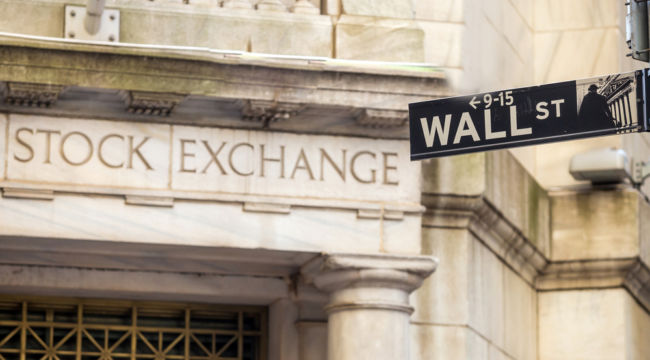Who Will Be Left to Buy?
The Dow Jones was up some 300 points yesterday when the sirens wailed at 2 o’clock sharp… and Jerome Powell pickled the bomb switch.
When the all-clear sounded at 4 p.m., the index was down 352 points. In all, the Dow swung 900 hair-raising points yesterday.
Markets emerged from their shelter this morning to take a look around — and survey the damage.
Still shaken, still rattled… they broke under the strain of it all.
The Dow Jones hemorrhaged another 464 points today, to 22,859.
The S&P fell 39, while the Nasdaq tumbled another 108.
85% of S&P stocks have now suffered a correction of 10% or more. 60% are in bear markets — down at least 20%.
And the Nasdaq is now within 2% of a bear market.
In all, Wall Street is sunk in its worst December since 1931.
“Now the entire bull market trend is looking to fall apart with a devastating bear market to come,” panics analyst Sven Henrich.
“The ghosts of 2007 are all around us,” he warns.
But we ignore the menacing spectral omens for the moment… and return to yesterday.
We explained yesterday that the rate hike may have pushed the Fed’s benchmark rate above the “neutral” rate of interest.
That is, rates may now depress rather than stimulate.
But it was not the rate hike itself that filled the bomb shelters yesterday afternoon.
The market had largely anticipated the hike.
It was rather Mr. Powell’s post-announcement statement about the Fed’s balance sheet:
We thought carefully about how to normalize policy and came to the view that we would effectively have the balance sheet runoff on automatic pilot… I think that the runoff of the balance sheet has been smooth and has served its purpose… I don’t see us changing that.
The Dow Jones plummeted over 500 points as Mr. Powell spoke.
Former colleague David Stockman explains why:
The clear-and-present danger to the greatest financial bubble in modern history is the fact that Powell affirmed without hesitation that the Fed will proceed — on automatic pilot no less — to drain [its balance sheet].
Since October last, the Federal Reserve has run some $365 billion off its balance sheet.
It expects to carry on the business at a $50 billion monthly clip through 2020.
Thus it appears that David is correct.
The Federal Reserve has abandoned its nearly decade-long defense of the stock market.
It was up on the rooftops year upon year, manning the flak guns, filling the sky with metal at the first sight of marauders.
Now markets feel abandoned — or worse.
It’s as if the Fed has thrown aside its guns, turned its coat… and went over to the other side.
Now it’s the one dropping the bombs on Wall Street.
Wonders Michael Snyder of The Economic Collapse blog:
“Is the Federal Reserve actually TRYING to cause a stock market crash?”
More:
It is insanity to raise interest rates when stocks are already crashing, but the Federal Reserve did it anyway… All of the economic numbers tell us that the economy is slowing down, and on Wednesday Fed Chair Jerome Powell even admitted that economic conditions are “softening”… They know that higher rates will slow down the economy even more, but it isn’t as if the Fed were divided on this move. In fact, it was a unanimous vote to raise rates.
In conclusion:
They clearly have an agenda, and that agenda is definitely not about helping the American people.
An agenda? But what?
Whispers circulate that the unanimous vote was calculated to deliver a political message…
Trump raged and thundered against a possible rate hike, blackening Jerome Powell’s good name in the process.
So they intended to read the president a severe lesson in “Fed independence” — to show him who’s boss.
We’ve issued our agents urgent instructions to investigate the rumors… and report back immediately.
Meantime, the bombers are closing in on Wall Street again…
Fourth-quarter earnings season is underway.
Corporations are generally not allowed to conduct stock buybacks ahead of earnings season — lest they be accused of acting on inside information.
Buybacks provided much of the helium that has lifted markets to such dizzied heights.
Corporate buybacks, in fact, represent the largest source of demand for U.S. stocks.
But we are told that 75% of the S&P will be “under blackout” by Dec. 26.
That is, 75% of S&P components will be unable to buy back their own stocks for a good month or so.
In conclusion…
The Fed has abandoned Wall Street, investors are fleeing for their lives… and 75% of the S&P will soon be unable to buy back their stocks.
Who will be left to buy?
Regards,
Brian Maher
for The Daily Reckoning



Comments: